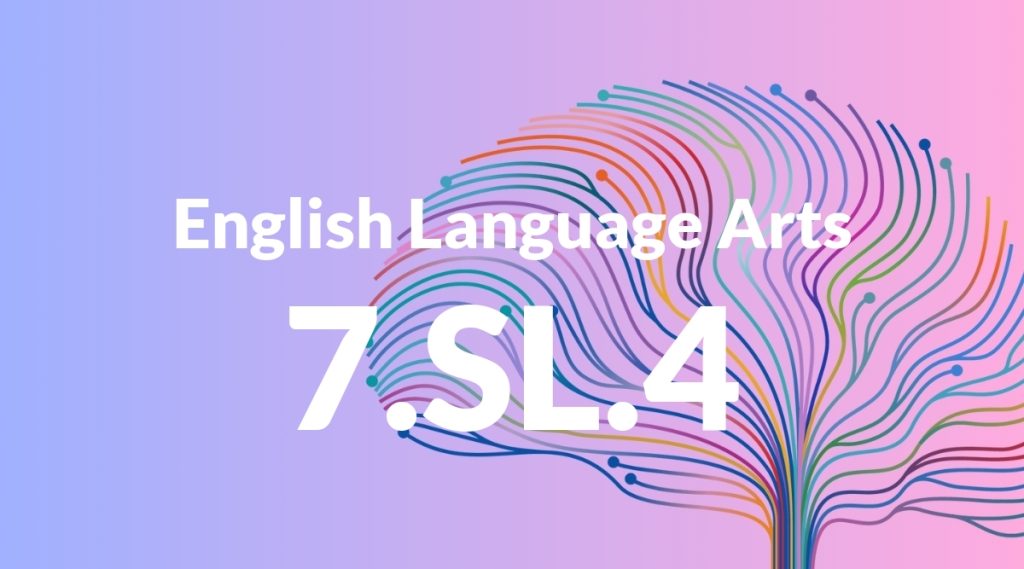Standard: 7.SL.4 – Present claims and findings, emphasizing salient points in a focused, coherent manner with pertinent descriptions, facts, details, and examples; use appropriate eye contact, adequate volume, and clear pronunciation.
Grade level: Grade 7
Subject: English Language Arts
Domain: Speaking & Listening
Teacher Overview
This standard emphasizes the importance of clear and effective communication when presenting claims and findings. It is crucial for students to learn how to present their ideas in a focused and coherent manner, using appropriate descriptions and examples. Mastery of this skill is essential for academic success and effective communication in real-world scenarios. Students should be comfortable with basic public speaking and have an understanding of how to structure their presentations logically. They should also know how to use descriptive language and examples to support their points.
After mastering this standard, students will be able to present more complex ideas and arguments effectively, using multimedia tools and handling audience interactions with confidence.
Common Misconception 1
A common misconception is that simply speaking louder will make a presentation more effective. However, volume needs to be varied for emphasis and clarity, not just increased.
Intervention 1
An intervention could include exercises that focus on varying volume and tone to highlight key points and maintain audience interest.
Common Misconception 2
Another misconception is that reading directly from notes or slides is sufficient. This approach can make the presentation less engaging and reduce eye contact with the audience.
Intervention 2
Encourage students to practice their presentations multiple times so they become familiar with the material and can speak more naturally, maintaining eye contact and engaging with the audience.
Prerequisite Knowledge
Students should have basic public speaking skills, an understanding of how to organize information logically, and familiarity with using descriptive language and examples to support their points.
Subsequent Knowledge
Students will develop advanced public speaking skills, including persuasive speaking techniques, the ability to handle audience questions, and the use of multimedia tools to enhance presentations.
Instructional Activities
- Practice delivering short speeches on familiar topics.
- Engage in peer review sessions to provide and receive feedback on presentations.
- Use video recordings to self-assess and improve presentation skills.
- Participate in group discussions and debates to practice presenting and defending points.
- Create multimedia presentations that incorporate visual aids to support spoken content.




